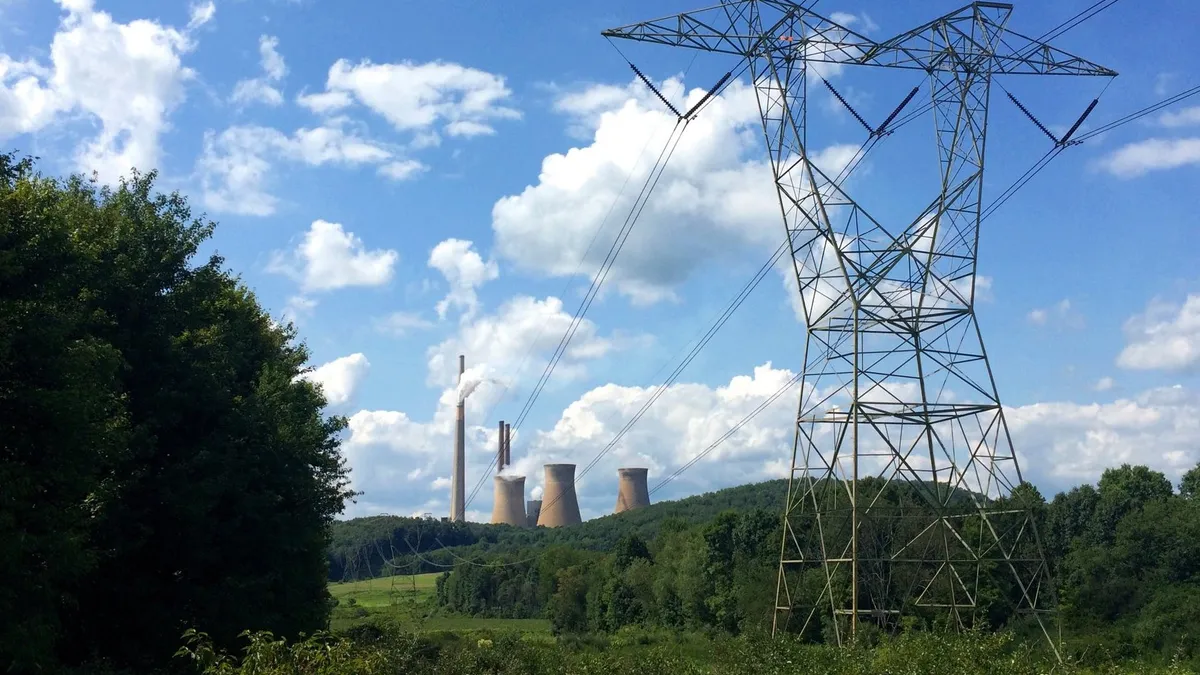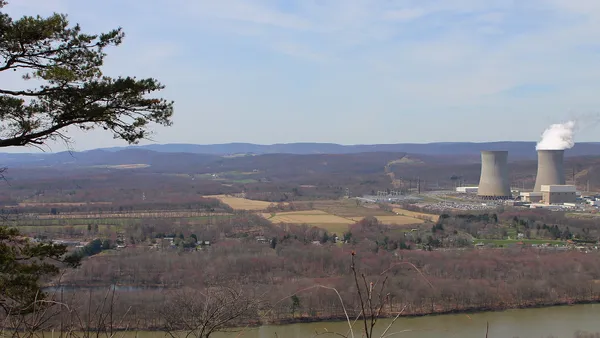On July 15, the Hawaii Public Utilities Commission rejected the application from Florida-based NextEra Energy to acquire Hawaiian Electric Industries (HEI), the parent company of the state’s dominant electric providers. The two companies terminated their merger agreement soon after.
The decision concluded a contentious 18-month proceeding. It highlighted a long-standing dissatisfaction with HEI (often referred to as the Hawaiian Electric Company (HECO), the name of its largest subsidiary) and provoked a rich debate among stakeholders over whether the investor-owned utility business model best serves Hawaii’s needs or whether an electric cooperative, a municipal utility, or a system operator might be better.
In their decision, Hawaii regulators walked a fine line, ruling that while NextEra’s leadership would not likely damage HEI operations, it would not benefit the state overall.
“After reviewing the entire record, the Commission concluded that while NextEra is fit, willing, and able to step into the shoes of the HECO Companies without a loss in performance, the Application for the proposed Change of Control is not in the public interest,” PUC staff wrote in a summary of the decision
As the merger was debated, Hawaii energy policy underwent profound changes. The state enacted the first and only 100% renewable energy mandate in the U.S., to be met by 2045, and the commission imposed the first replacement of retail rate net metering with a reduced incentive package.
Separate proceedings edged forward on the energy mix the HEI utilities should be developing and how best to create standards and incentives for a new system based on distributed energy resources (DER).
In light of those policy imperatives, the PUC decision on the merger raises the question of which company — and which utility business model — would serve Hawaii residents best. Stakeholders reached by Utility Dive gave no definitive answer in the week after the rejection, but many pointed to the need to align consumer and utility interests, and the new opportunity the decision could represent to reform HEI.
“What came out of the merger debate was a public awareness that didn’t previously exist about what’s possible,” State Rep. Chris Lee (D) told Utility Dive. “For the first time, we see the opportunity to decide for ourselves the direction we want to go and everybody wants to be part of that.”
The regulators' logic
In its decision, the commission listed five basic “areas of concern.”
First, regulators concluded, NextEra’s promises of rate credits, investment funds, and a rate increase moratorium would not provide adequate benefits to ratepayers.
The promise of $60 million in rate credits was too small and “conditional” on a promised moratorium on rate cases, which regulators said was subject to changes itself that could terminate the credits. The promise of an estimated $464.4 million in savings to ratepayers and an estimated $496.1 million in derivative benefits were contingent on unsatisfactorily substantiated assumptions, regulators wrote.
Second, NextEra failed to offer financial measures that would alleviate risks to ratepayers from the change of control. Specifically, regulators wrote NextEra’s involvement put the HEI companies under some threat of a bankruptcy that would lead to the utilities being run by a bankruptcy court.
That was perhaps the commission’s most striking finding — that NextEra’s extensive utility industry experience was nevertheless inadequate to run HEI. The company was not prepared, regulators decided, to deal with “specific and unique renewable energy issues facing Hawaii, such as integrating very high levels of distributed energy resources – particularly residential rooftop solar PV systems – into isolated island grids.”
NextEra failed to show this was not the case during the merger proceeding. Its promises of “good faith” and “best efforts,” the regulators found, were “too broad and vague.”
The commission was also concerned the change in ownership could shift “ultimate decision-making authority” for Hawaii’s electricity providers to NextEra’s Florida corporate headquarters and its corporate governance. This concern was heightened by a “lack of details” about post-merger plans, regulators said.
Finally, regulators were concerned that, with the state's utilities a part of an extremely large and complicated family of national corporate entities, Hawaii's participants in competitive solicitations would get inadequate attention.
Because NextEra did not offer satisfactory reassurances that it would address these concerns, the commission was unable to conclude that the proposed commitments “weighed in favor of the public interest.”
NextEra backers: A 'cowardly' decision
Nearly all the stakeholders in the NextEra merger proceeding — save the Hawaii Department of Defense and electric workers union — opposed or were neutral on the acquisition. Even so, the deal attracted some influential supporters.
Both HEI and NextEra declined interviews for this piece. NextEra directed Utility Dive to former PUC Chair Hermina Morita, a long-time supporter of the deal.
Morita, in a blog post written after the decision, described the ruling as “cowardly” and “steeped in flawed logic” used to support the views of Gov. David Ige (D), who opposed to the merger.
In the run-up to the merger ruling, Ige appointed PUC lawyer Thomas Gorak to the commission, replacing Commissioner Mike Champley, whose term expired at the end of June. Ige did not, however, seek confirmation for Gorak from the state Senate, saying he had the authority to fill the vacancy himself in the short term.
Gorak ultimately recused himself from the 2-0 decision on the merger, but his appointment left some suspicious Ige was trying to directly influence the merger decision.
The ruling, Morita wrote, was “a devious way to accomplish a political decision to accommodate Gov. Ige’s opposition to NextEra rather than a fair regulatory review under a well-established framework of regulatory standards.”
Senate President Ronald Kouchi (D) sent a letter to the state attorney general, requesting more details on why he authorized Ige to make the unilateral appointment.
Beyond the Gorak issue, the merger is also a broader reflection of Hawaii’s unstable regulatory environment and unfriendly business climate, Morita wrote.
“Any credible company would assess Hawaii’s current business/regulatory climate and run in the opposite direction.”
In response to wider concerns about the health of Hawaii's business climate, Gov. Ige told a local paper that “more than one company reached out to him” about partnering with or buying HEI. His press representative Jodi Leong declined to name the companies.
Rumors persist of interest from Warren Buffett’s Berkshire Hathaway Energy (BHE) and Google. Only Twenty First Century Utilities, a recently-founded Washington utility holding company, was named in a Star-Advertiser article, but few details are known.
Twenty First Century, according to Morita, is a rather inadequate stand-in for NextEra, which was ranked 183 among the Fortune 500 and was named the top performing electric utility for 2016.
“How stupid would we be to risk the operations of our electric utility, an essential service that we all rely on, to private equity interest to experiment on?” she wrote.
That route may already be closed. Following the commission's ruling, HEI management decided “it is in the best interests of the company and all of the stakeholders that it serves – including shareholders, customers, employees and communities – to remain independent,” a company release announced.
“Despite statements reported in the media about other unnamed parties rumored to be interested in acquiring HEI,” the release added, ‘the company is not currently in discussions with any other party regarding a business combination and does not intend to initiate any such discussions.”
The rejection of the NextEra proposal puts HEI’s credit rating and stock value at risk, Morita said in a an interview on ThinkTech. “Without a strong business partner, there is very little cushion or safety net.”
It will be utility customers who pay the higher electricity costs that result from higher interest rates for access to capital caused by the regulatory uncertainty and the utility's financial instability, she adds in the essay.
The termination payment HEI will receive from NextEra, which will amount to approximately $60 million and which it has publicly committed to “our ongoing clean energy transformation,” will fall far short of its needs, according to Morita.
The 100% renewables mandate will require “substantial capital investments,” she wrote in her blog post. “Total capital investments over the next 30 years for Hawaii are estimated to be $25.8 billion (in nominal dollars), of which the utility may invest 53%, or $13.6 billion,” she quoted from HEI’s most recent Power Supply Improvement Plan (PSIP). “The balance may be made by project developers, customers, and the State (via tax incentives).”
Without NEE backing, HEI’s cost of capital for “the necessary investments for a modern electrical system will be going up,” she insisted. “Hawaii's 100% renewable future is getting pretty expensive, mainly by self-inflicted stupidity.”
'Multiple paths forward'
While Morita painted a grim picture of HEI’s future, some analysts outside the state see a less dire situation.
The utility’s outlook is “stable,” though much hinges on upcoming rate cases, according to a just-released Fitch Ratings assessment.
“The political and regulatory framework in Hawaii, while adverse to the proposed merger with NextEra, will remain ultimately supportive of HECO's credit profile,” analysts wrote.
“Meeting the 100% renewable target by 2045 could be a daunting task for HECO, without NextEra's capital and technological support,” the agency added. But “the rapidly declining cost of renewables and of battery storage and the headroom provided by the decline in oil prices are currently working in HECO's favor."
For these reasons, "HECO is well positioned to meet the 30% renewable target by 2020,” Fitch added.
Rep. Lee sees “multiple paths forward” for HEI and believes it is the obligation of elected leaders “to put them all on the table, identify those in consumers’ best interests, and begin moving toward them,” he said.
A $1.2 million appropriation he got included into the last state budget is intended to begin meeting that obligation by funding a detailed study of alternative business models’ costs and benefits, he added.
“Regardless of the business model, the key is aligning utility incentives with the outcomes we want,” Lee said.
To advance that, he is working on legislation that directs the PUC to develop a performance-based regulatory model that will allow the utility compensation for serving customer interests.
“That will reduce the utility’s conflict of interest,” Lee said.
It also may be time for the legislature to provide direction in the so-far floundering effort of the utility to develop a satisfactory PSIP, he added. “The legislature could direct the commission to address this issue, or it could create a more stakeholder-driven process not dominated by the utility, or it could create an independent third-party-guided process.”
There are good people at HEI but they have been pressured to satisfy multiple stakeholders and the will to change has not yet surfaced, Lee said. “But if they do not satisfy the public demand for change, I’m not sure they will be able to prevail.”
Mark Glick, head of the State Energy Office, said it was satisfying to see his office's cautions that NextEra’s promises were conditional and inadequately substantiated reflected in the PUC decision.
Now that the decision has been reached, the Energy Office will resume making certain the HEI utilities meet interim goals required by the 100% renewables mandate, Glick said.
The Energy Office will also move ahead on administering the study Rep. Lee’s budget appropriation funded, he said. “We hope to have a Request for Proposals on the street by late August or early September and we expect the entire process will take 12 months to 24 months.”
Clearing the merger docket will open time both for his office and the PUC to advance other important proceedings and programs, Glick expects. They include the DER docket, the PSIP docket, the community renewables docket, and the Energy Office's advanced transportation initiative.
Consumer Affairs Division Executive Director Jeffrey Ono was pleased the commission’s decision included his agency’s concerns with consumer protections but he doesn’t see the decision as a victory.
“We have concerns about Hawaiian Electric’s ability to move forward with the clean energy transformation because it will take a great deal of capital investment,” he said. “NextEra had the potential to help lower the costs but the customer benefits weren’t there.”
Consumer Affairs is “agnostic” on the business model question, Ono said. “If there is an offer at a price that is fair and reasonable and provides true tangible substantial customer benefits, we have to consider it.”
Aligning interests
An appendix to the regulators’ merger decision — “Guidance for Any Future Merger or Acquisition Proceedings” — amounts to “a roadmap for Hawaii’s energy future,” said Richard Wallsgrove, environmental advocate and policy director at the Blue Planet Foundation.
“With the legislature’s study of alternative utility business models, that question will go under the microscope,” he noted. But the merger order shows regulators understand that no matter what utility business model emerges, “the starting place is aligning the interests of the customer and the utility.”
Despite any short-term financial instability provoked by the decision, the state can reach its 100% renewables goal with HEI’s available resources, Wallsgrove believes.
Under PUC questioning during the merger proceeding, he pointed out, HEI’s executive leadership told the commission that, though it would take longer, the utility can achieve the mandate by 2045 without NextEra.
Also, he said, “the newest PSIP has every island except Oahu getting to 100% before 2045 under a pretty conservative set of assumptions.”
Hawaii’s energy future does not rest entirely on utility spending, Wallsgrove argued. Customers are also investing in rooftop solar, behind-the-meter battery storage, and electric vehicles. New distribution system technologies will turn them into utility resources.
Finally, he said, finances will not be an issue because fossil fuels are already as expensive as renewables and will become more expensive, so that economics will drive the process.
Matthias Fripp, a University of Hawaii economist, echoed Wallsgrove’s prediction. In a recent assessment of Hawaii’s energy goals, he estimated “a cost of energy in 2045 that is roughly the same, or a little less, than the cost of energy over the last few years,” Wallsgrove pointed out.
“Hawaii has always met its clean energy targets and sometimes beaten them by orders of magnitude,” he added. “This should not be different.”
Concerns about the utility’s financials are part of a larger policy framework, Wallsgrove argued. With the right policy, the utility of the future can serve its own interests and its customers’ interests.
Earthjustice Attorney Isaac Moriwake, who represented Sierra Club in the merger proceeding, is also anxious to move ahead. He has been contacted by companies about getting into the utility business in Hawaii.
“They expressed interest in acquiring Hawaiian Electric,” he said. “The conversations were not detailed but they see the opportunity to do clean energy right.” He has, however, seen no evidence of the rumored BHE offer, he added.
Whoever owns the utility, “the first need is to get the utility’s house in order, and the guiding beacon for that should be “Inclinations on the Future of Hawaii’s Electric Utilities,” he said. Published by the PUC in 2014, when Morita was chair, the paper was one of the first and clearest statements of the need for a new utility business model.
The utility must immediately begin building on its decision to cancel its LNG contracts by collaborating with stakeholders in commission proceedings “to reset the PSIP and flush the pipeline of all the plans developed under the influence of NextEra,” Moriwake said.
Even before that, they must work with the commission “to expand the cap on the grid supply option for rooftop solar so the state’s solar companies can get back to work,” he added. “That should have happened yesterday.”
Another immediate need is to recapture progress in the DER 2.0 docket and begin creating “the distributed energy resources market of the future,” Moriwake said.
Change is a leadership issue and there seems to be community consensus that HECO management needs to change, Moriwake said. “But it can’t be just playing musical chairs. They can’t keep doing the same thing and expecting different results.”
There also needs to be leadership from the commission and the legislature, he said. “'Can HEI do it?' is the wrong question.”
Without the right incentives, even the most competent people “will be pushing in the wrong direction,” Moriwake said. “The ‘build more, profit-more’ model is bankrupt. New incentives have to align utility and customer interests.”
The entire program, he insisted, must make Hawaii safe for clean energy investment.
"That should be possible because, as the Inclinations paper said, 'Hawaii has already entered a new paradigm where the best path to lower electricity costs includes an aggressive pursuit of new clean energy sources,'” he added.
Early signals that real change is coming will be if the legislature extends funding support to the commission and if work on utility and regulatory reforms move forward, he said.






















